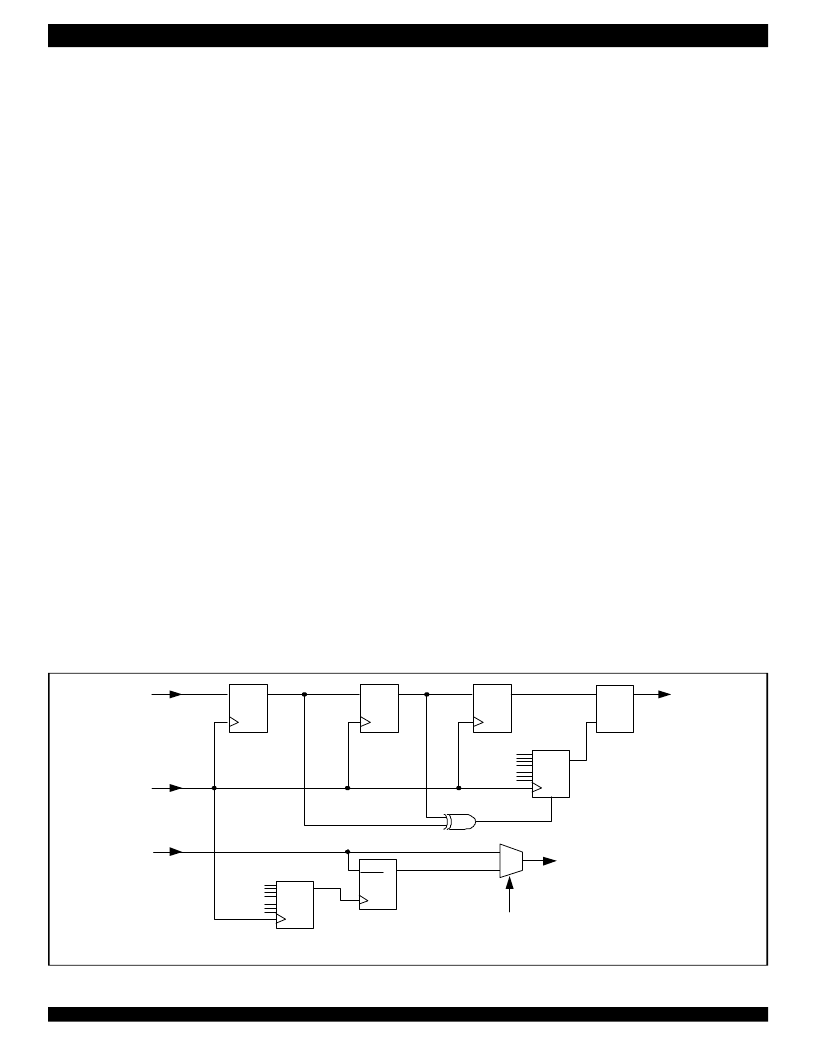- 您現(xiàn)在的位置:買賣IC網(wǎng) > PDF目錄377487 > IDT821068 (Integrated Device Technology, Inc.) OCTAL PROGRAMMABLE PCM CODEC PDF資料下載
參數(shù)資料
| 型號: | IDT821068 |
| 廠商: | Integrated Device Technology, Inc. |
| 元件分類: | Codec |
| 英文描述: | OCTAL PROGRAMMABLE PCM CODEC |
| 中文描述: | 八路可編程PCM編解碼器 |
| 文件頁數(shù): | 15/45頁 |
| 文件大小: | 589K |
| 代理商: | IDT821068 |
第1頁第2頁第3頁第4頁第5頁第6頁第7頁第8頁第9頁第10頁第11頁第12頁第13頁第14頁當(dāng)前第15頁第16頁第17頁第18頁第19頁第20頁第21頁第22頁第23頁第24頁第25頁第26頁第27頁第28頁第29頁第30頁第31頁第32頁第33頁第34頁第35頁第36頁第37頁第38頁第39頁第40頁第41頁第42頁第43頁第44頁第45頁

INDUSTRIAL TEMPERATURE RANGE
IDT821068 OCTAL PROGRAMMABLE PCM CODEC
15
CHOPPER CLOCK
IDT821068 offers two programmable chopper clock outputs:
CHCLK1 and CHCLK2. Both CHCLK1 and CHCLK2 are synchronous
to MCLK. CHCLK1 outputs signal with programmable 2-28 ms clock
cycle, while the frequency of CHCLK2 can be any of 256 kHz, 512 kHz
and 16.384 MHz. The frequency selection of chopper clocks can be
implemented by Global Command 8. The chopper clocks can be
used to drive the power supply switching regulators on SLICs.
DEBOUNCE FILTERS
For each channel, IDT821068 provides two debounce filter circuits:
Debounced Switch Hook (DSH) Filter for SI1 and Ground Key (GK)
Filter for SI2 as shown in Figure 10. They are used to buffer the input
signals on SI1 and SI2 pins before changing the state of the SLIC
Debounced Input SI1/SI2 Registers (Global Command 9 and 10), or,
before changing the state of the GCI upstream C/I octet. Frame Sync
(FS) is necessary for both DSH filter and GK filter.
DSH Debounce bits in Local Command 4 can program the
debounce time of SI1 input from SLIC on individual channel. The DSH
filter is initially clocked at half of the frame sync rate (250
μ
s), and any
data changing at this sample rate resets a programmable counter.
The counter clocks at the rate of 2 ms, and the count value can be
varied from 0 to 30 which is determined by Local Command 4. The
corresponding SIA bit in the SLIC Debounced Input SI1 Register
(accessed by Global Command 9), and the corresponding channel’s
SI1 bit in GCI upstream C/I octet would not be updated with the SI1
input state until the count value is reached. SI1 bit usually contains
SLIC switch hook status.
GK Debounce bits in Local Command 4 can program the
debounce interval of SI2 input from SLIC on corresponding channel.
The debounced signal will be output to SIB of SLIC Debounced Input
SI2 Register (accessed by Global Command 10) and the
corresponding channel’s SI2 bit in GCI upstream C/I octet. The GK
debounce filter consists of an up/down counter that ranges between 0
and 6. This six-state counter is clocked by the GK timer at the
sampling period of 0-30 ms, as programmed by Local Command 4.
When the sampled value is low, the counter is decremented by each
Figure 10. Debounce Filters
D
Q
D
Q
D
Q
D
Q
E
D
Q
DSH3-DSH0
Debounce
Period
(0-30ms)
D
Q
GK3-GK0
Debounce
Interval
(0-30ms)
up/
6 states
Up/down
Counter
7 bit Debounce
Counter
7 bit Debounce
Counter
= 0
1
0
GK
SIB
SIA
SI1
4kHz
SI2
RST
FS/2
clock pulse. When the sampled value is high, the counter is
incremented by each clock pulse. When the counter increments to 6,
it sets a latch whose output is routed to the corresponding SIB bit and
GCI upstream C/I octet SI2 bit. If the counter decrements to 0, this latch
is cleared and the output bit is set to 0. In other cases, the latch, the
SIB status and the SI2 bit in GCI upstream C/I octet remain in their
previous state without being changed. In this way, at least six
consecutive GK clocks with the debounce input remaining at the same
state to effect an output change.
DUAL TONE AND RING GENERATION
Each channel of IDT821068 has two tone generators, Tone 0
generator and Tone1 generator, which can produce a gain-adjustable
dual tone signal and output it on VOUT pin. The dual tone signal can
be used for the signal generations such as test, DTMF, dial tone, busy
tone, congestion tone and Caller-ID Alerting Tone etc.
The Tone0 generator and Tone1 generator of each channel can be
enabled or disabled independently by setting the T0E and T1E bits in
Local Command 6. The frequency of the tones generated can be
programmed from 1 Hz to 4.095 kHz with 4095 steps. Local
Command 5 provides 12 bits for each tone generator to set the
frequency.
The gain of the Tone0 and Tone1 signal of each channel is
programmed by the TG[5:0] bits in Local Command 6, in the range of
-3 dB to -39 dB. The gain of each tone can calculated by the formula
below:
G = 20 × lg (Tg×2/256) + 3.14
where, Tg is the decimal value of TG[5:0].
The Dual Tone Output Invert bit (TOI) of Global Command 19 can
invert the output tone signal. When it is ‘0’, it means no inversion;
when it is ‘1’, the output tone signal will be inverted.
Ring signal is a special signal generated by the dual tone
generators. When only one tone generator is enabled or both tone
generators produce the same tone, and frequency of the tone is set as
ring signal required (10 Hz to 100 Hz), the VOUT pin will output the
Ring signal.
相關(guān)PDF資料 |
PDF描述 |
|---|---|
| IDT821068PX | OCTAL PROGRAMMABLE PCM CODEC |
| IDT821621 | LONG HAUL SLIC |
| IDT821621J | LONG HAUL SLIC |
| IDT82P2281 | Single T1/E1/J1 Long Haul Short Haul Transceiver |
| IDT82P2281PN | Single T1/E1/J1 Long Haul Short Haul Transceiver |
相關(guān)代理商/技術(shù)參數(shù) |
參數(shù)描述 |
|---|---|
| IDT821068PX | 制造商:IDT 制造商全稱:Integrated Device Technology 功能描述:OCTAL PROGRAMMABLE PCM CODEC |
| IDT821621 | 制造商:IDT 制造商全稱:Integrated Device Technology 功能描述:LONG HAUL SLIC |
| IDT821621J | 制造商:IDT 制造商全稱:Integrated Device Technology 功能描述:LONG HAUL SLIC |
| IDT8217LP35P | 制造商:Integrated Device Technology Inc 功能描述: |
| IDT82ALVCH16823PA | 制造商:IDT 制造商全稱:Integrated Device Technology 功能描述:3.3V CMOS 18-BIT BUS-INTERFACE FLIPFLOP WITH 3-STATE OUTPUTS AND BUS-HOLD |
發(fā)布緊急采購,3分鐘左右您將得到回復(fù)。